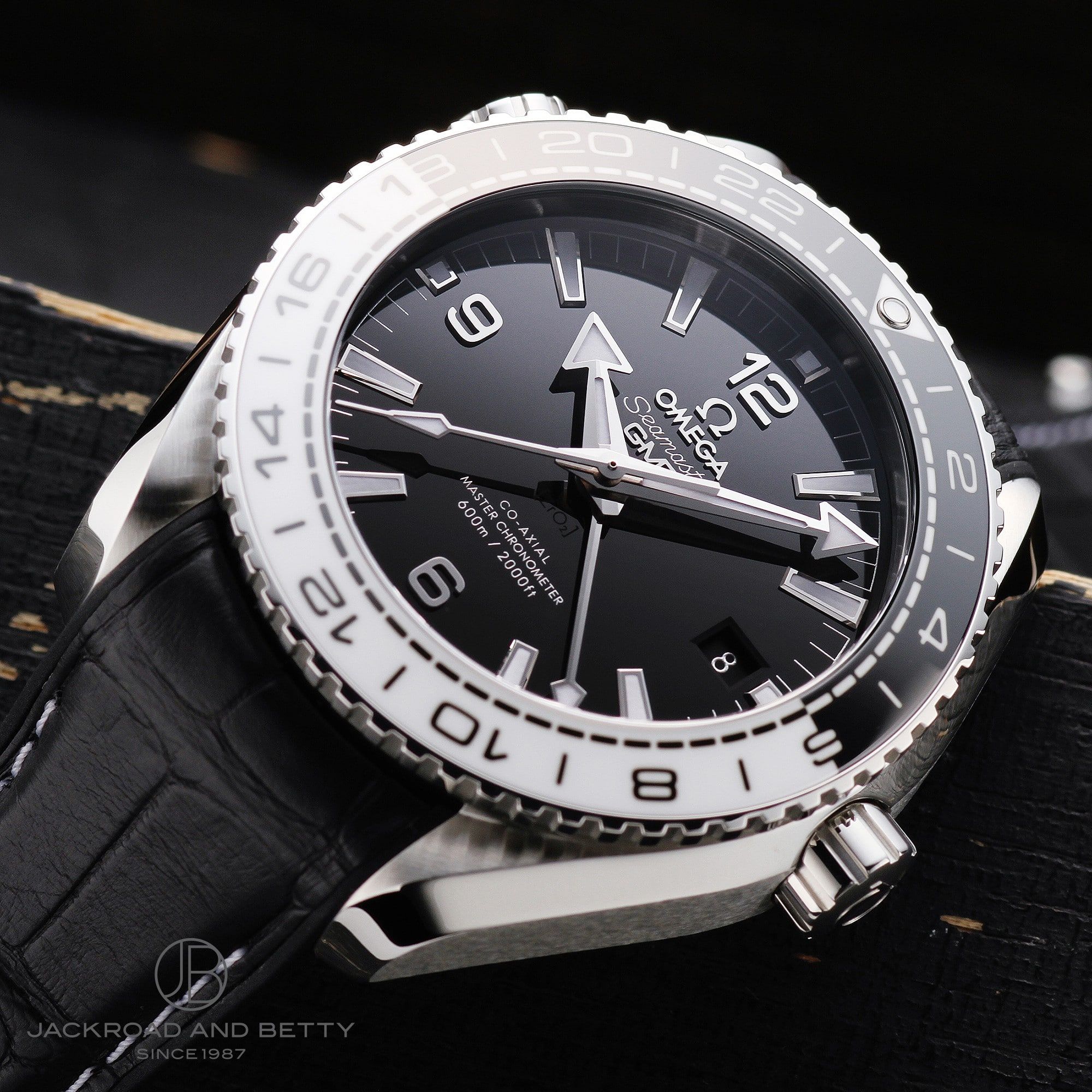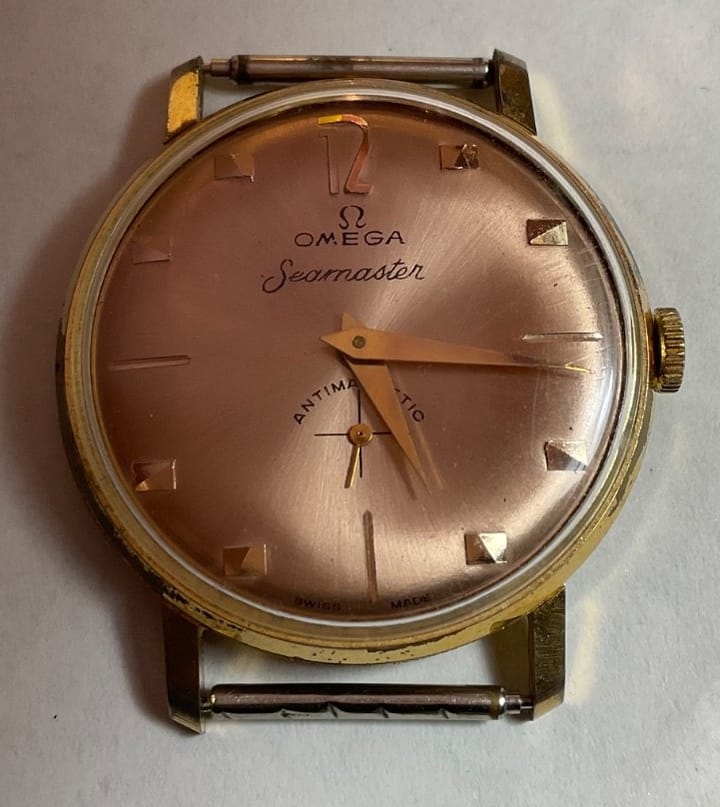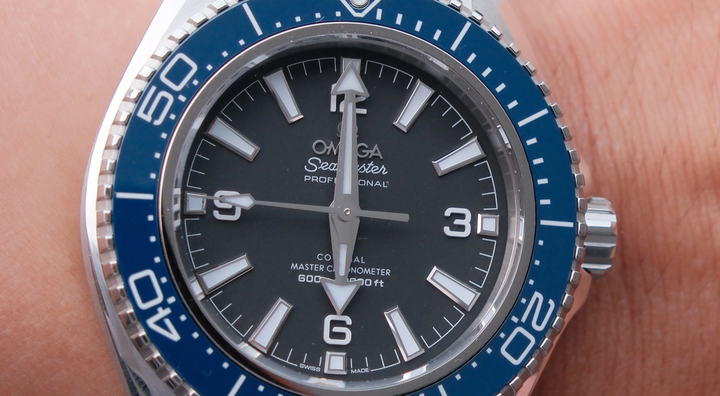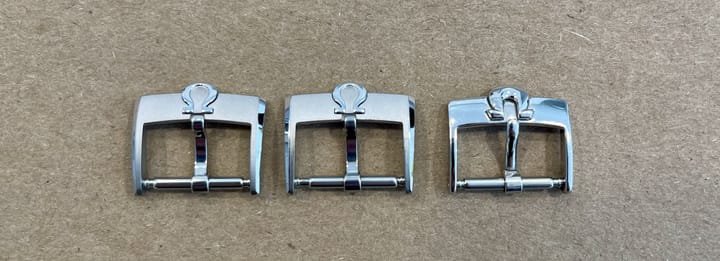The Oreo GMT made many significant improvements over the original Planet Ocean GMT, from a 15,000 gauss anti-magnetic movement, to METAS certification, to one of the most technically impressive bezel designs to ever feature on a GMT watch.
And Then There Was One
The original Planet Ocean GMT family was a line of 12 watches in a variety of metals which were well received but noticeably on the thick side for their 43.5 mm diameter. With the second generation in 2016, Omega worked to improve every aspect from thickness, to adding a Master Co-Axial movement with METAS certification, to updating the bezel and bracelet. The design stayed very similar but everything was iteratively improved.
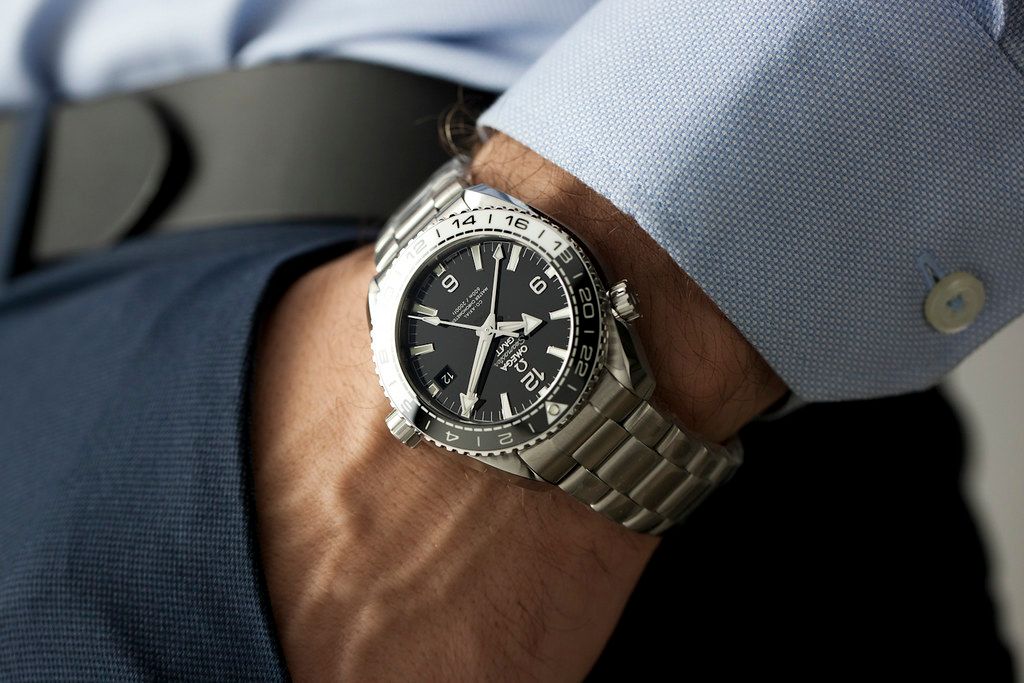
What did change though is the composition and market segment of the Omega Planet Ocean GMT line. Gone was the huge variety of metals and colors, replaced with a single metal and color, the stainless steel Oreo.
Omega did produce a wide variety of models in ceramic cases based on the "Deep Black" in a new, larger size for a Planet Ocean GMT, the 45.5 mm XL. These watches offer variety, complex designs, limited edition models and an avenue for Omega to show off their latest research in materials science, but these are not true GMT watches, lacking the 24-hour rotating bezel in favor of a diving scale.
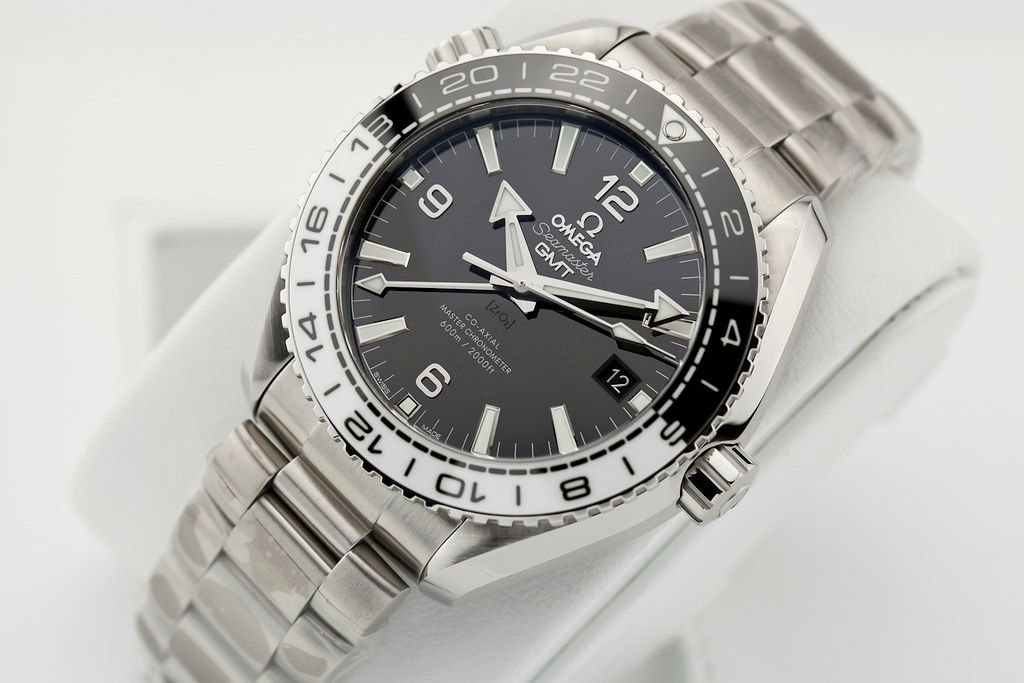
The lonely Planet Ocean Oreo GMT, with its distinctive black and white ceramic bezel is an exceptionally good watch though. This is made evident by the fact that it is one of the very few modern Omega models to receive a nickname that actually stuck.
It is a watch that has been intensely popular and enduring, released originally in 2016, this watch is still part of the Omega catalog as of late-2023 and with no new movement on the horizon, it looks to be a long-term part of the Omega line-up. When looking closely at the Ref 215.30.44.22.01.001, it's not hard to see why either. The Oreo GMT is an superbly reliable, comfortable, durable, accurate and most of all, legible watch. The black-and-white colorway is distinctive, echoing the original Seamaster GMT 50th Anniversary model and extremely practical, making this GMT watch the only piece a traveller needs.
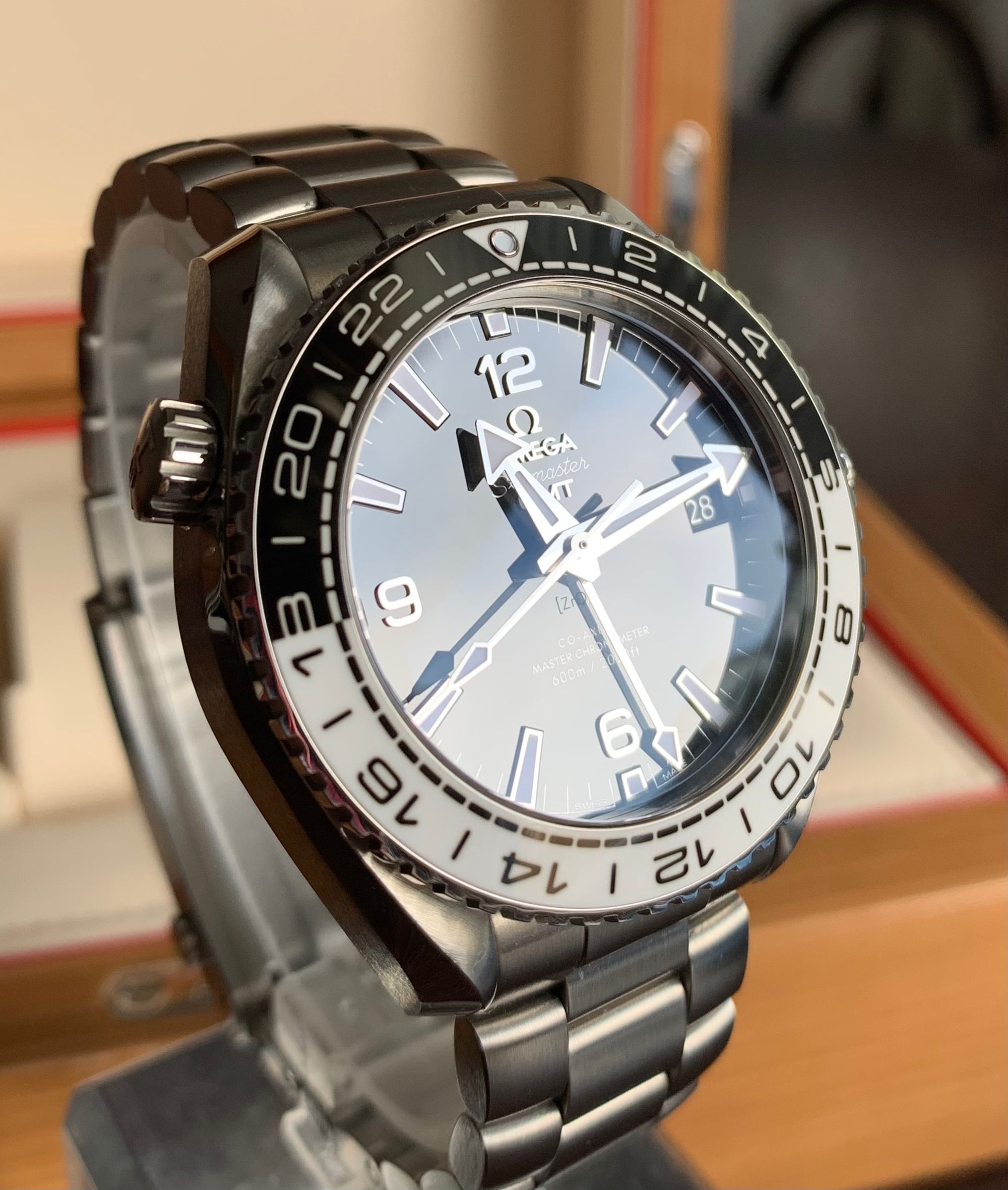
Case & Bracelet
The 2nd generation Omega Seamaster Planet Ocean GMT follows its predecessor in splitting the difference between the regular 42 mm Planet Ocean and the 45.5 mm XL with a 43.5 mm case size. Although the diameter has remained the same, Omega has made significant improvements to the case design with this generation.
The Oreo GMT's stainless steel case is still a quite thick watch for a non-chronograph at 17.0 mm, but this is actually a slight improvement over the previous generation's 17.3 mm. While that 0.3 mm would be very difficult to even notice, it is at least a minor step in the right direction. The thickness in these watches comes about from two reasons, firstly the Seamaster Planet Ocean case's depth rating of 600 meters simply requires more metal and a thicker sapphire crystal. Secondly the Cal 8906 movement is quite a bit thicker than the ETA-based calibres of old.
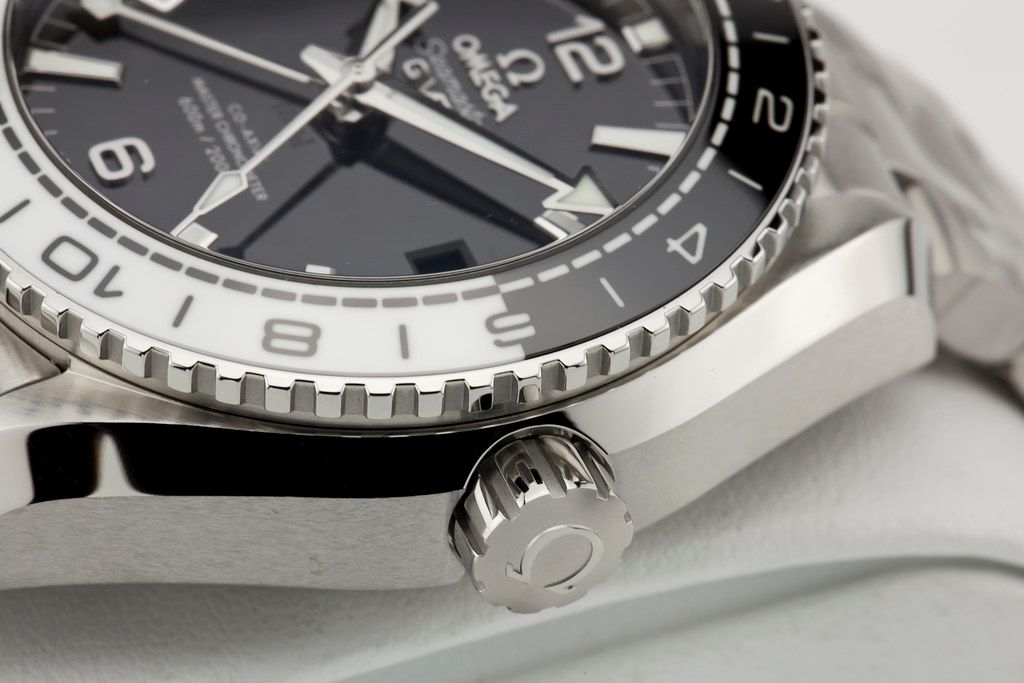
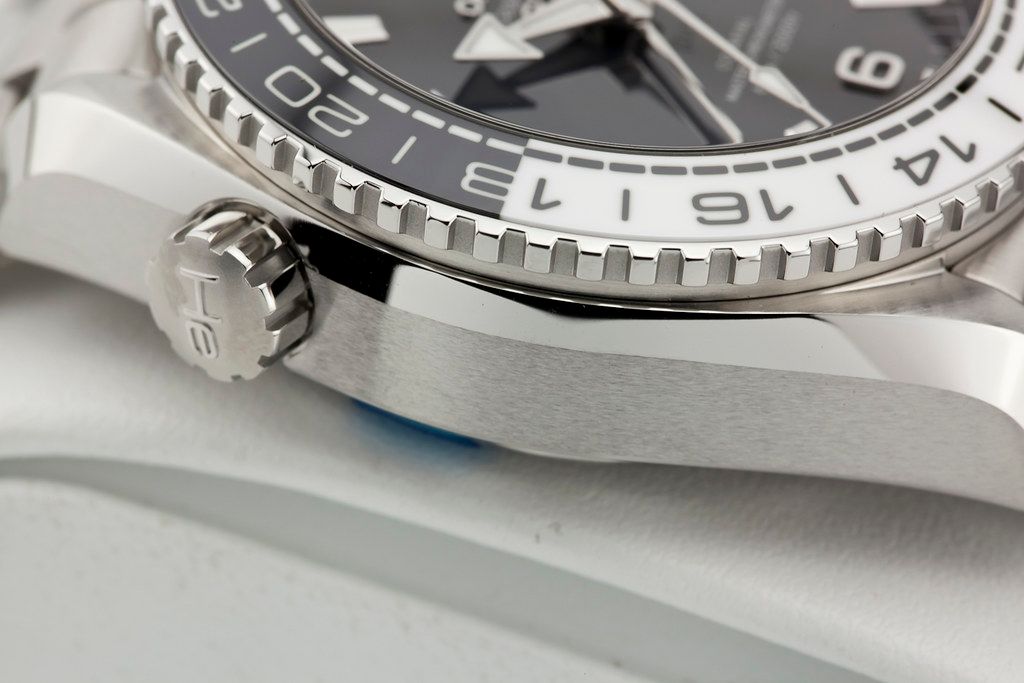
Profile View Of The Planet Ocean Oreo GMT On Bracelet Ref 215.30.44.22.01.001 - Image by @mdgrwl
The Planet Ocean case carries the traditional twisted lugs first seen on the Seamaster 300 diver models of the 1960s, in an asymmetrical case with integral crown guards derived from the Speedmaster Pro Moonwatch case rather than the Seamaster Pro 300M. It's easy to miss this small element that differentiates the Planet Ocean from the Bond Seamaster case. The Seamaster Pro 300M has crown-guards which sit proud of the case on their own while the Planet Ocean is effectively a Moonwatch case without pushers.
What the Planet Ocean does carry over from the Bond Seamaster, however, is the manually operated helium escape valve which you'll never use but is part of the whole professional diver aesthetic. Incidentally, the original Seamaster Pro GMT did away with the helium escape valve, but on both generations of Planet Ocean GMT it has returned. The Planet Ocean also carries a somewhat larger, also more Speedmaster Pro style knurled crown rather than the smaller Seamaster Pro 300M crown.
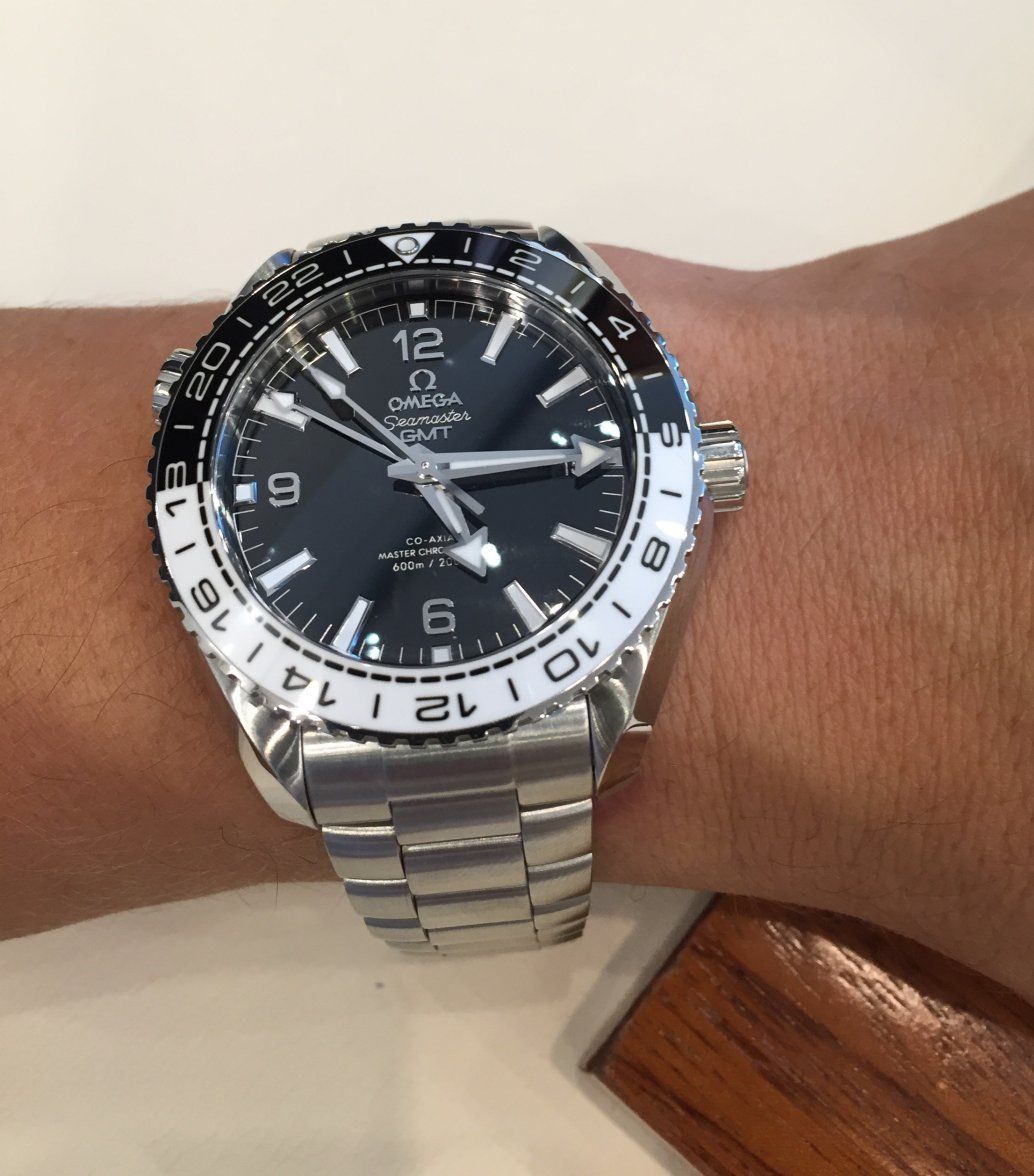
The Seamaster Planet Ocean Oreo GMT is the only current Planet Ocean to feature a true 24-hour GMT bezel, exceptionally well finished in black & white ceramic, with a luminous dot at the 24-hour position. The lack of different color options is a bit disappointing, but the contrast and legibility offered by the Oreo is undeniable.
I think concentrating the GMT line on this look, which is a modern interpretation of the very popular and well-loved Ref 2234.50 Seamaster Pro GMT is a good move. This monochrome look for an Omega GMT watch is now 25 years old and if it continues, the Oreo could become a design seen as iconically Omega, much like the blue "Bond" Seamaster.
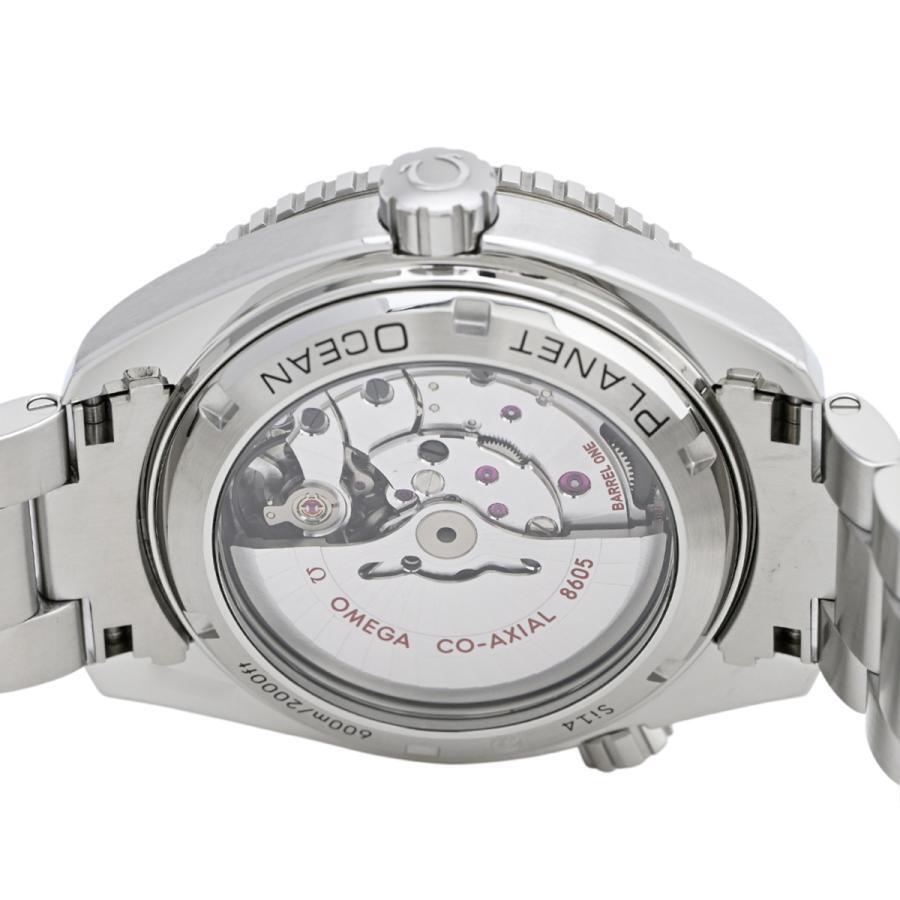
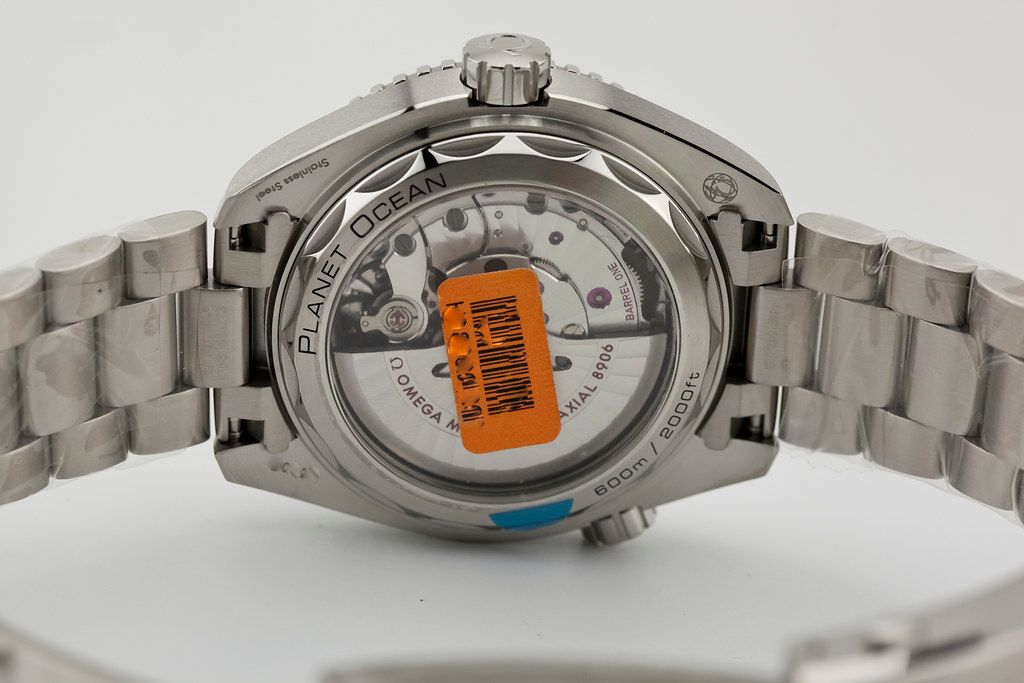
The 1st Gen Planet Ocean GMT (Left) & 2nd Gen Planet Ocean GMT (Right) Illustrating The Difference In Case-back & End-link Design, Image by @mdgrwl
The exhibition case-back of the 2nd Generation Planet Ocean GMT has been updated with a new design which has a lower profile, and different keying, still with text engraved around the outer edge. While display-backs don't help the thickness of a watch typically, it does appear that this is one area where Omega has tried to improve that situation and the new design likely contributes to some of the thickness reduction. Given the attractive finishing on the Calibre 8906 movement, I can see why they still want to keep this feature even if it comes with some packaging compromises.
The Oreo features an updated version of the Planet Ocean bracelet, in a 21 mm lug width. The first difference is that the end-links are now female rather than male, allowing an extra link of articulation from the springbar, which allows a closer fit to the wrist, especially on smaller wrists. The screw-and-bushing system of link adjustment is carried over, but with a key difference. The new clasp features an internal push-button micro-adjust system, meaning fiddling around with half-links is now a thing of the past. This is a massive quality of life improvement to these new Planet Oceans and not only allows owners to get a perfect fit, but to adjust that fit to account for hot days, physical activity or eating a bit more over the holidays.
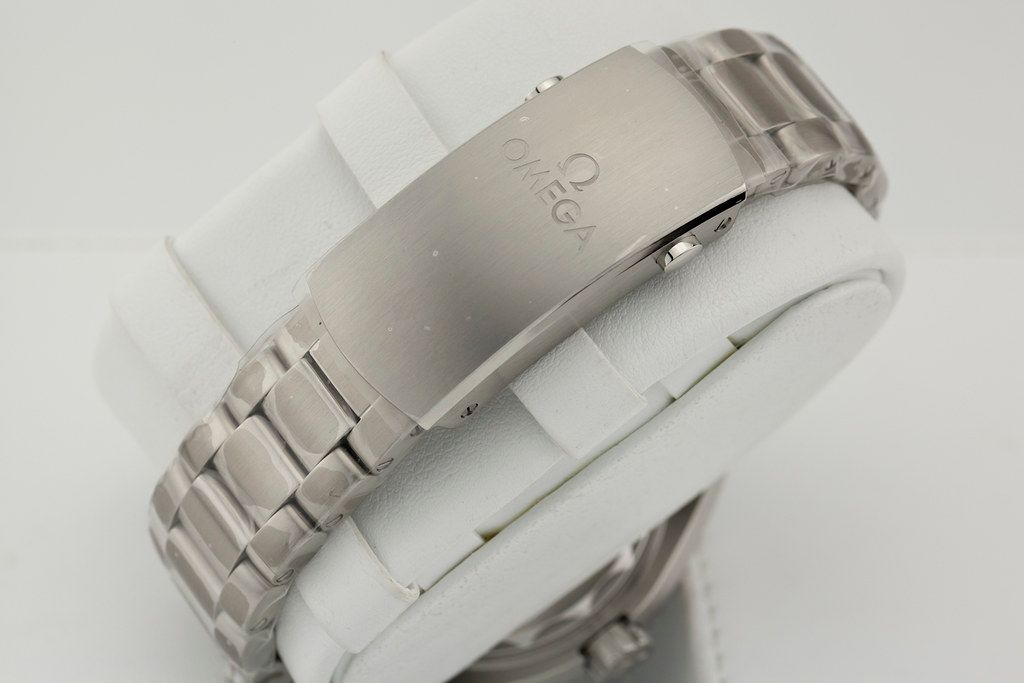
The stainless steel bracelet retains the same look and feel, with the brushed finish still providing ease of maintenance, and a simple Omega logo in the center of the otherwise flat clasp. These bracelets are comfortable, don't pull hair and stand up to abuse extremely well.
The alternative leather strap found on the Ref 215.33.44.22.01.001 is finished in black alligator skin with white stitching and an Omega single-fold deployant clasp. It is attractive and comfortable, however the vast majority will likely favor the bracelet in this instance. There is an extensive catalog of alternative strap options including rubber straps which fit the deployant clasp and NATO straps available from Omega to fit these 21 mm lugs.
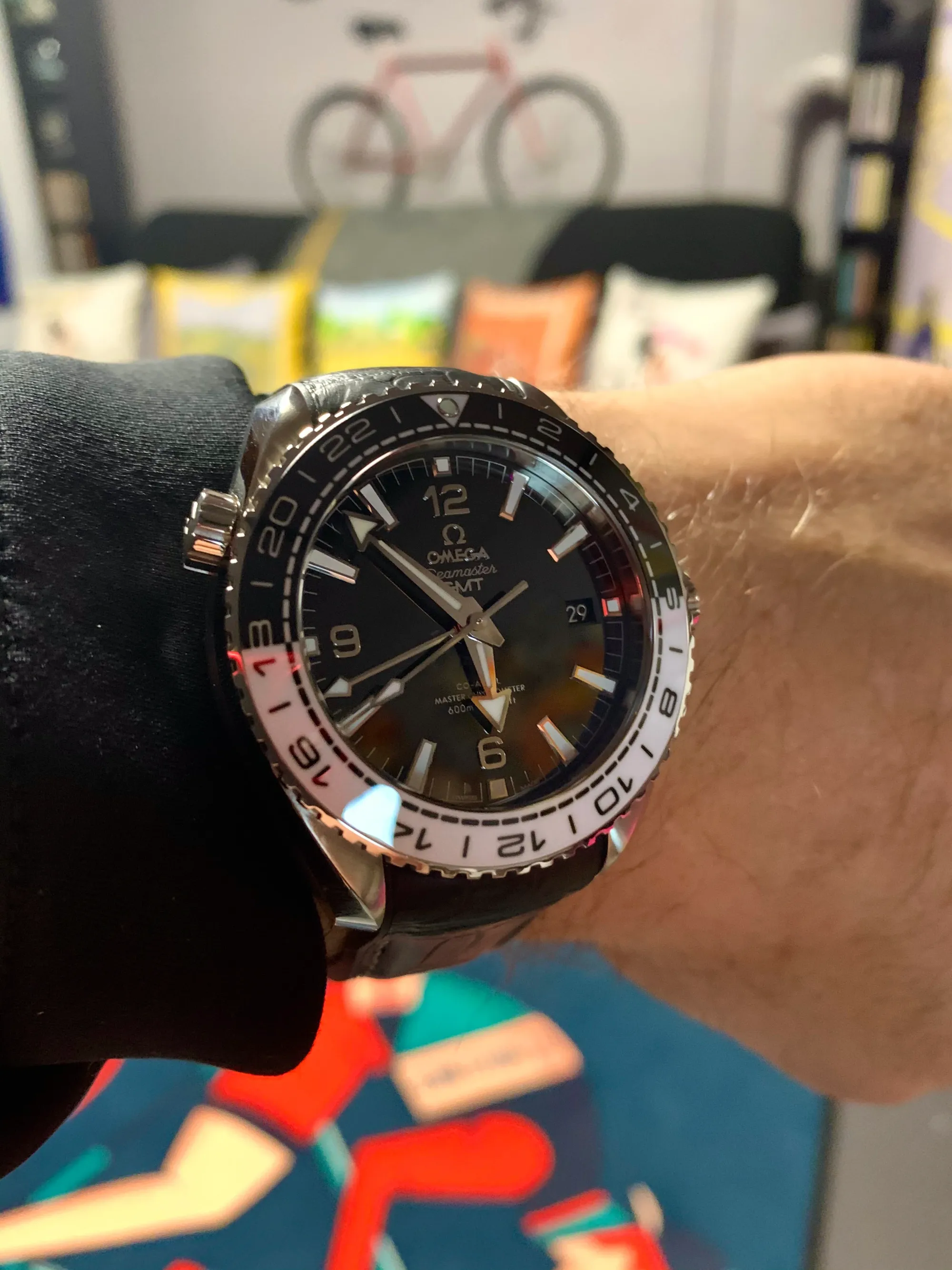
Movement
The movement powering the Seamaster Planet Ocean Oreo GMT is the Co-Axial Calibre 8906. This movement is a modified version of the in-house Calibre 8900 Master Co-Axial movement introduced in 2015 with the Globemaster as Omega's second-generation flagship movement. The Calibre 8900 family is an iterative improvement of the prior Calibre 8500 movement from 2007, with the addition of 15,000 Gauss magnetic field resistance and METAS certification, with tighter specifications than the original.
The Calibre 8906 GMT variant would have been easy to adapt from base the Calibre 8900, given that the later was already designed with a jumping hour hand for travel purposes, leaving less work for engineers to do in adding the GMT complication.
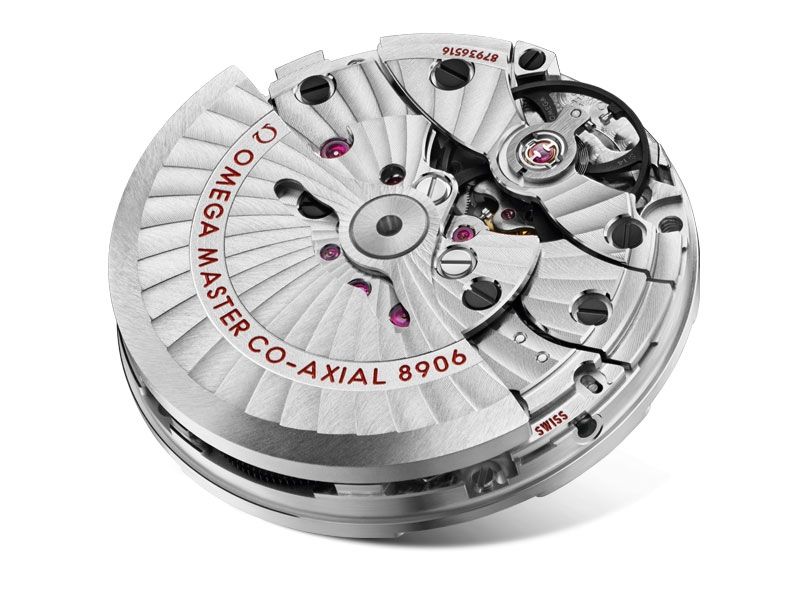
The Cal 8906 featured a 3-level Co-Axial escapement, leaving it immune to the problems associated with early Calibre 2500 movements. It beats at 25,200 vph, is METAS certified, and features hacking along with a jumping hour hand for date setting and travel convenience. The bi-directional automatic winding system powers two barrels in series for a total of 60 hours power reserve.
The aesthetic design of the movement is far more impressive than prior Omega models, with Cotes de Geneve en Arabesque in a radial, turbine-blade like finishing setting it apart from other watches. Also interesting and somewhat unusual was the Si14 silicon balance wheel, identifiable in matte black against the bright rhodium finishing. This effort in finishing the movement is undoubtedly why Omega chose to fit this generation with a display-back across the range.
While all movements have some teething issues when new, the Calibre 8900 family is an evolutionary improvement of the Calibre 8500 from 2007, and as a result there have not been any issues with this range of calibres at all. These movements can be handled by any qualified watchmaker with access to an Omega parts account and should perform exceptionally well if correctly maintained.
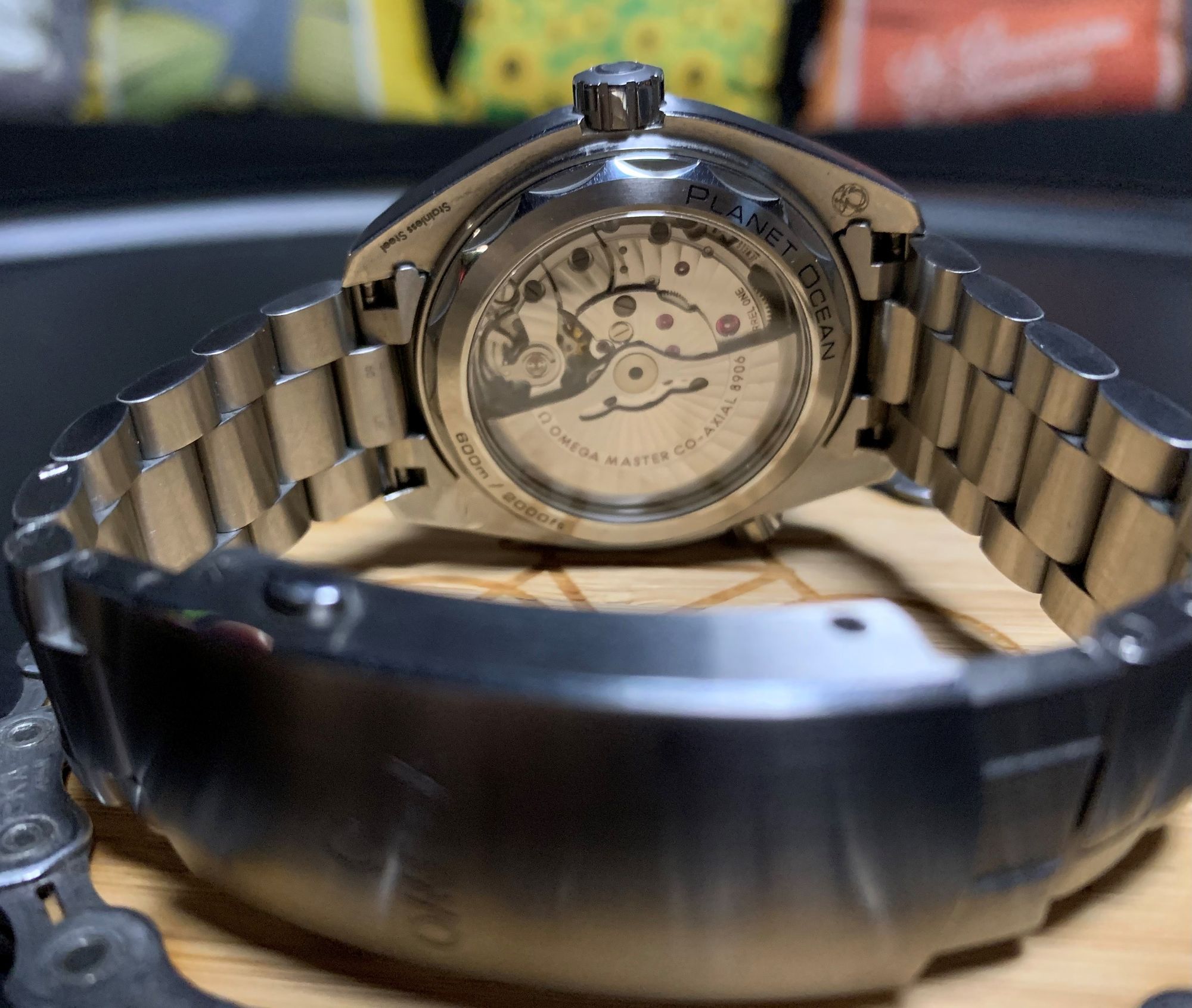
One point of conjecture that comes up often on the internet is whether the Calibre 8900 family of movements are truly "in-house" in the strictest sense of the word or not. This is due to the fact that while the Calibre 8900 and 9300, along with their related variants were designed exclusively for Omega, manufacturing was taking place on dedicated production lines at ETA facilities. Really it doesn't matter in the slightest, ETA is a Swatch Group company as is Omega, and ETA possess greater manufacturing expertise than anyone in the Swiss watch industry. Just as Omega leans on expertise from Comadur SA for high tech ceramics and composites, it makes sense to make use of the best talent available in the group, and this leads to a better product.
Dial & Variants
The bezel of the Planet Ocean Oreo GMT is the most significant departure in design from the previous generation.
The original Planet Ocean GMT family were only available with a single color bezel and contrasting inlay color. With the Oreo, we have a true half white, half black mixed color bezel in solid ceramic. Secondly, while most ceramic bezels, including those by Rolex feature indices cut into the ceramic and filled with contrasting paint or metal, this is not the case for the Oreo GMT. Instead, the indices are in contrasting ceramic baked into a single piece of ceramic, leaving the black & white bezel surface perfectly smooth to the touch. This is very challenging to achieve without losing sharpness or contrast, but it is executed beautifully on this watch in a world first.
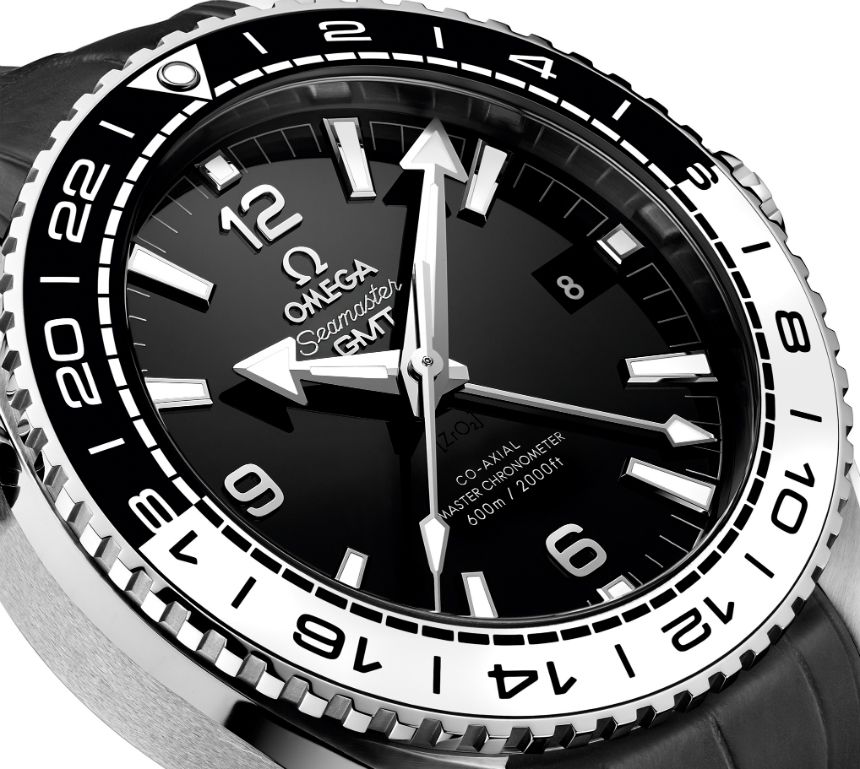
The bezel also retains some diver focused features for practicality reasons, the bezel has 120 clicks, and minute markings printed inside of the hour markings, making it entirely useful as a regular dive watch in addition to the GMT capability. The thought, effort and engineering put into this is by far my favorite feature of the Oreo GMT, and demonstrates the focus Omega has on subtle yet very helpful improvements with each generation.
The dial and hands are a standard Planet Ocean look, with applied luminous hour markers and an applied 6, 9 & 12 Arabic numerals in rhodium plated white gold. The glossy black ceramic dial is beautifully finished, if a little wordy with the Omega logo at the top in applied white gold, followed by Seamaster & GMT. While normally Seamaster is written in a contrasting color on Planet Oceans, the Oreo goes for an entirely monochrome look, matching the bezel and setting the watch apart from other models. The broad arrow hands are not the best for legibility when a GMT hand is involved but are an iconic Omega style that works aesthetically on a diver like the Planet Ocean.
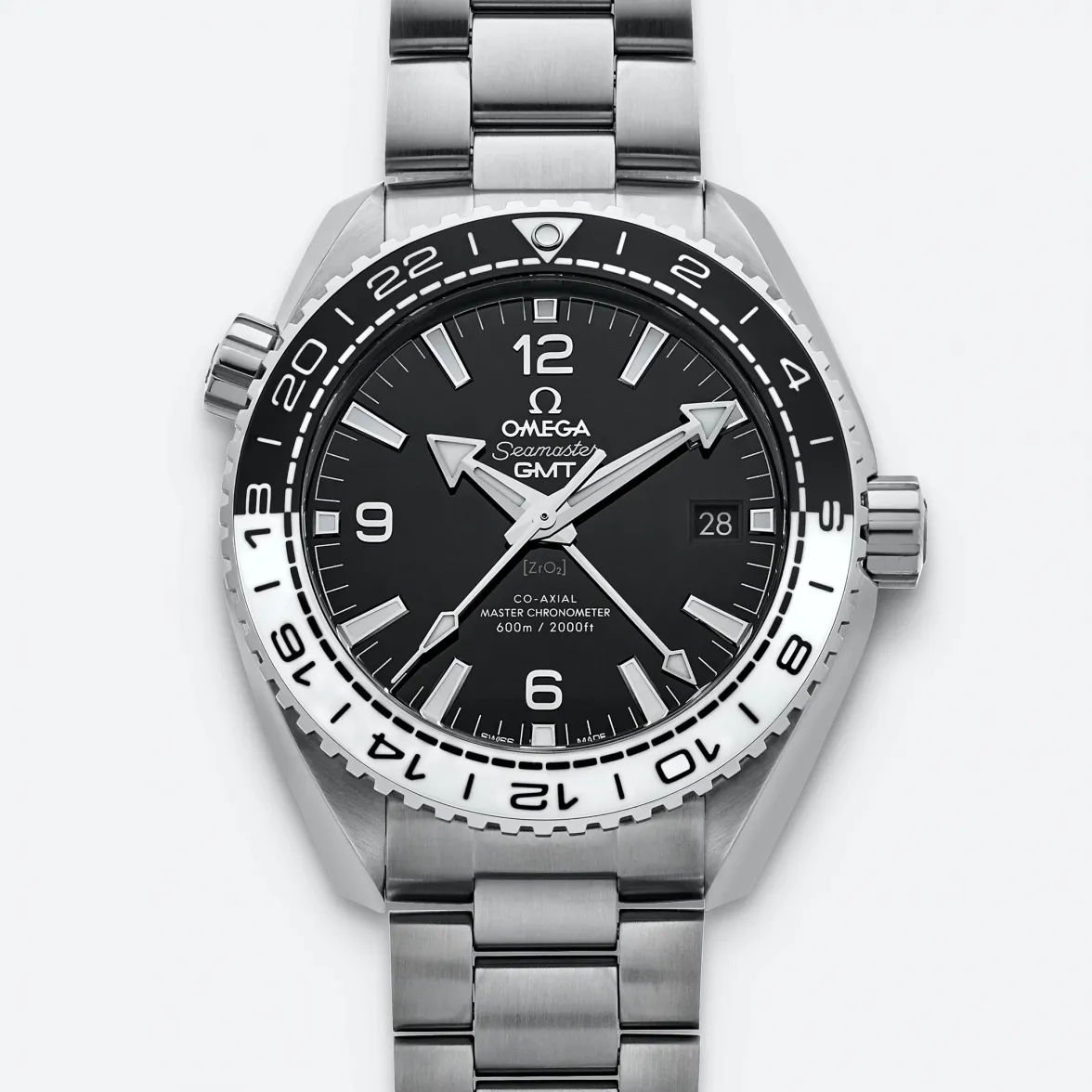
The overall look is very simple and elegant, which belies the complexity behind what is an extremely technically impressive watch. The connection to the 50th Anniversary Seamaster GMT of decades prior is also a very nice touch, especially to long time Omega collectors.
The two references are the 215.30.44.22.01.001 for the Oreo on steel bracelet, or 215.33.44.22.01.001 for the Oreo on alligator strap with deployant clasp.
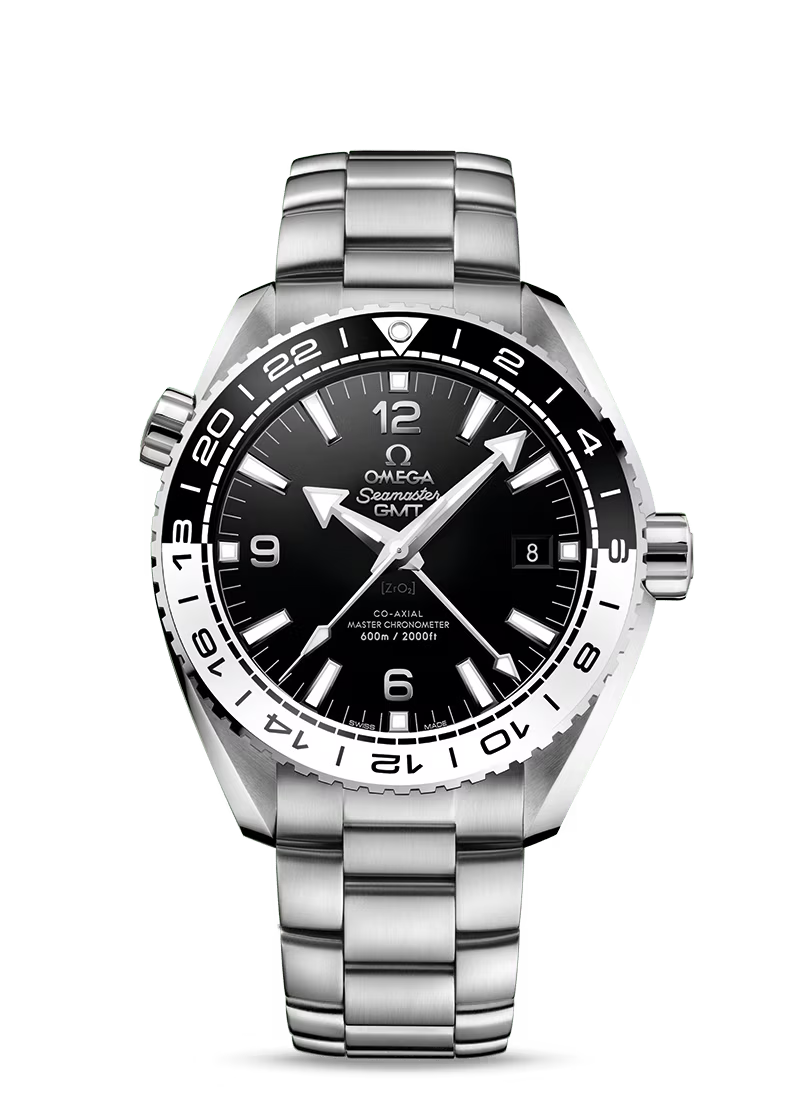
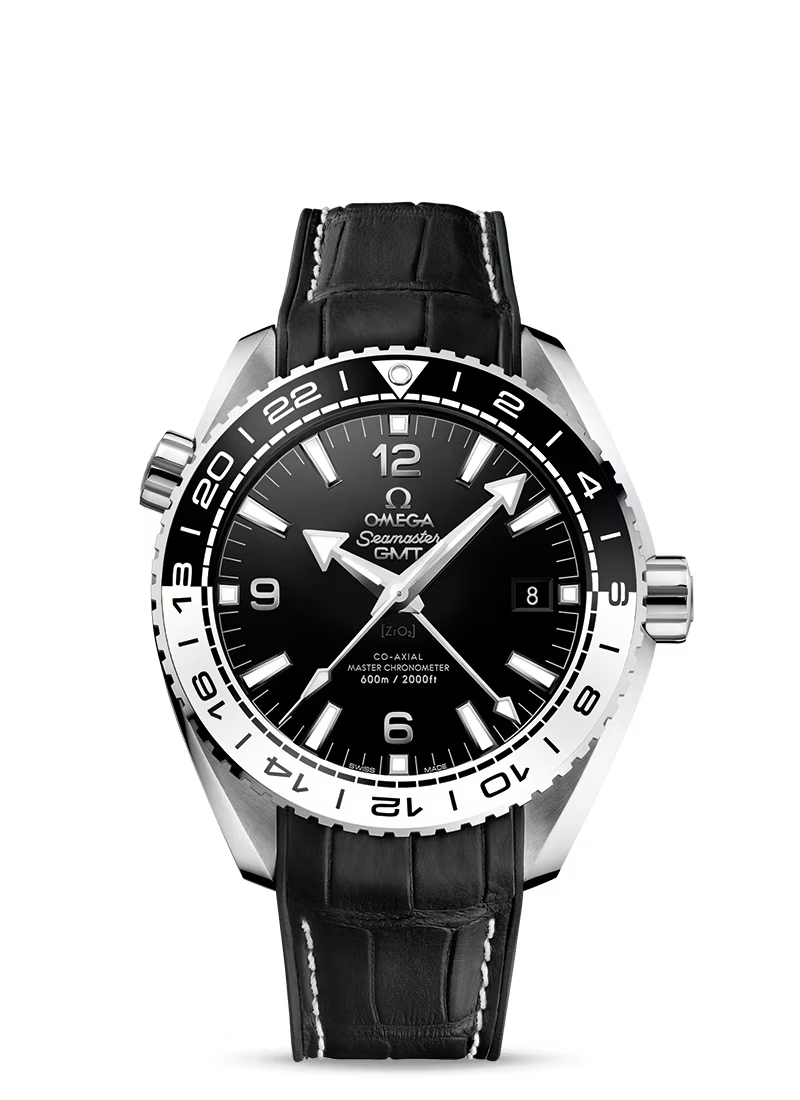
The Planet Ocean Oreo GMT Ref 215.30.44.22.01.001 On Bracelet, (Left) & Ref 215.33.44.22.01.001 On Alligator Strap, (Right)
Buying
When considering the 2nd Generation Planet Ocean GMT, there isn't any real choice given that the Oreo on strap or bracelet are the only options. Most owners will cross-shop this model against the previous 1st Generation Planet Ocean GMT, lineup which offers far more variations in colors and metals including titanium.
Compared to the previous generation, the Oreo offers no choice of colors, but a significantly better bracelet, slightly less thickness, a new movement with extreme resistance to magnetic fields, METAS certification and a slightly updated look. On the secondary market, those benefits lead to the Oreo selling at a premium of around $1,000-$1,500 over the first generation in equal condition. Whether that price difference is justifiable or not is entirely up to the buyer, and their personal preference.
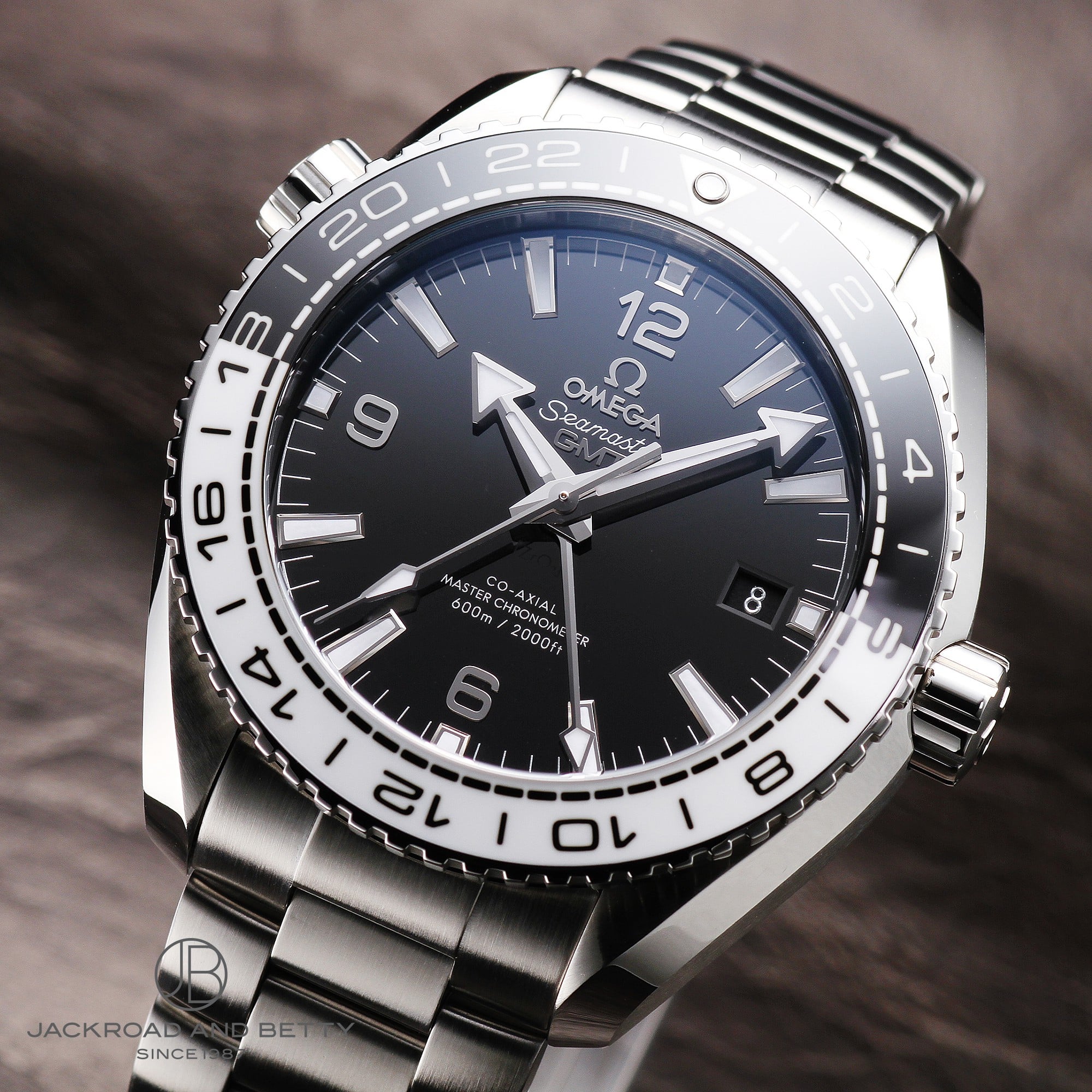
Values of the Oreo used are currently increasing as of late-2023. The reason for this is that this model is still in production despite being on the market for over 7 years and as Omega prices in general have been going up, along with inflation, so has the used value of Oreos. There are however a very large number of these in circulation due to its position as a single design model, and with patience, the right price and condition example will come along.
These are very high quality, durable and water resistant watches and the only real concern should be case and bracelet condition; whether it has any major scratches or dents, and whether it has been polished badly. As these watches are 7 years old at most at time of writing, the majority are not yet due for service, and this may be another beneficial reason to purchase the Oreo over the first generation. When the time does come, it can be handled by any Omega certified independent watchmaker.
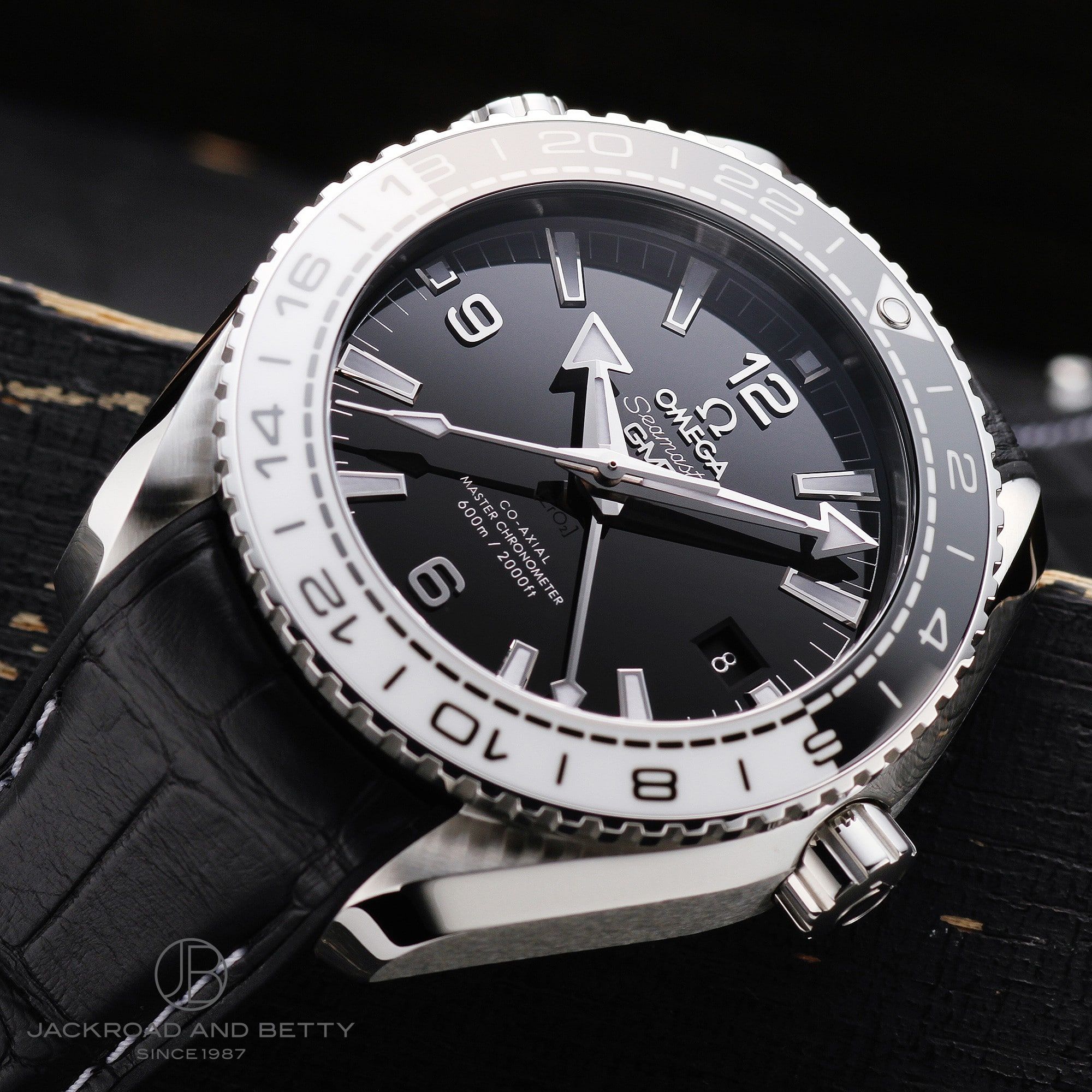
There is always an ample supply of these pieces for sale on forums, Chrono24, and eBay, with the best deals being no reserve listings on eBay. Recently examples on bracelet have gone as low as $4,700 which is quite a deal in no reserve listings, but this will vary a lot depending on completeness of the set, age, and condition.
These watches are still in production and currently list at $8,700 USD new from Omega. With no new GMT movement or major feature expected any time soon, the Oreo is likely to remain a current model for some time. As a result, buying a clean used example in particular is likely to be a great choice as prices will invariably increase over time.
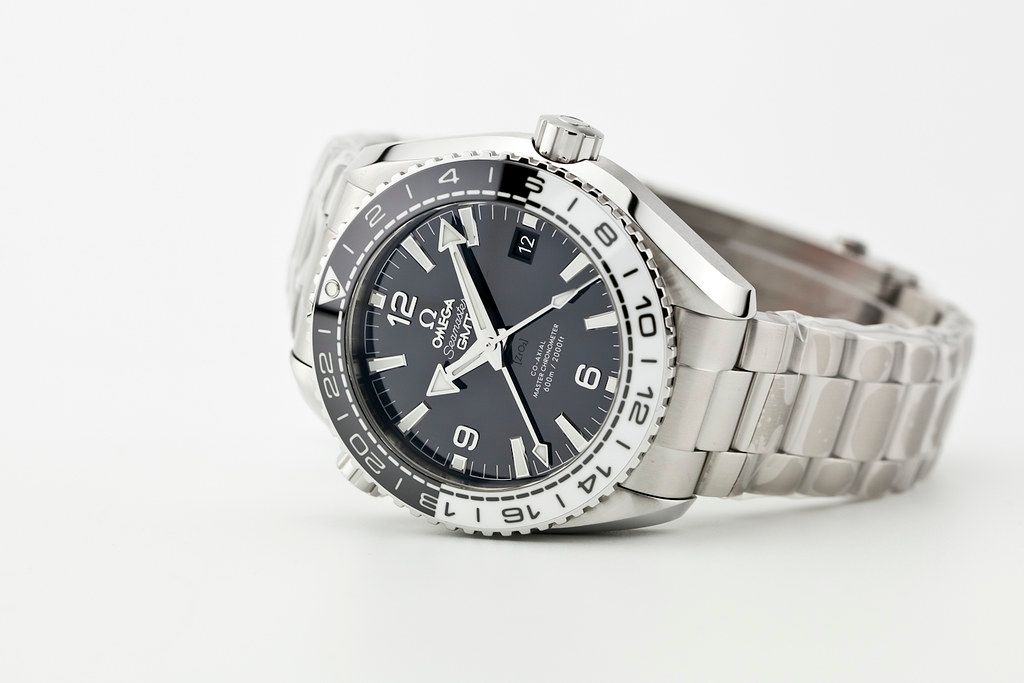
While I do hope that Omega can eventually address the thickness of the Planet Ocean GMT in the future and bring it down to a more reasonable 15 mm or so, as of 2023 this is the best all around GMT watch Omega has made. The updates make it a worthy and worthwhile upgrade over the original, and the classic color palette is both practical and identifiably Omega. Until something new like the Spirate escapement system makes its way to mass production, the Planet Ocean Oreo GMT is likely to remain Omega's flagship GMT watch.
